This pub is in Wheatsheaf Walk, a small outdoor shopping arcade which takes its name from the 18th-century coaching inn referred to as the ‘Old Wheatsheaf’ (demolished to make way for the arcade) which moved to Burscough Street in the late 18th century, when the narrow thoroughfare was part of the Liverpool to Preston coaching route. The Court Leet, responsible for running the town’s affairs, met in the town hall and often adjourned to the Wheatsheaf, until the court was disbanded in 1876.
Text about The Court Leet.
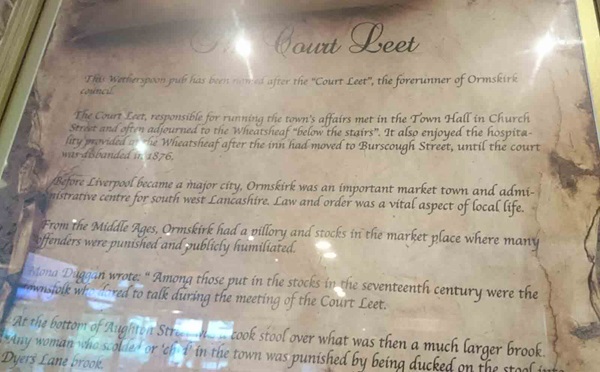
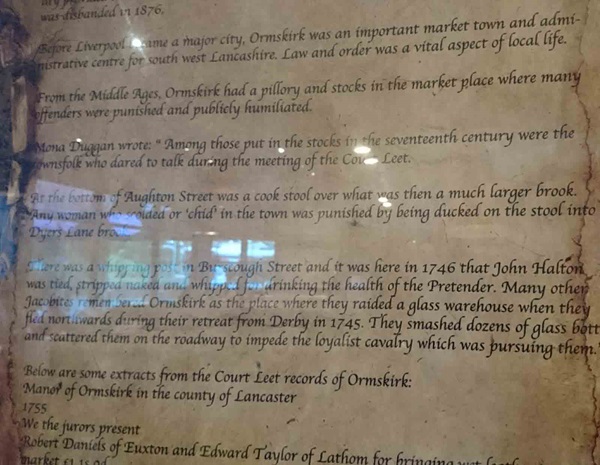
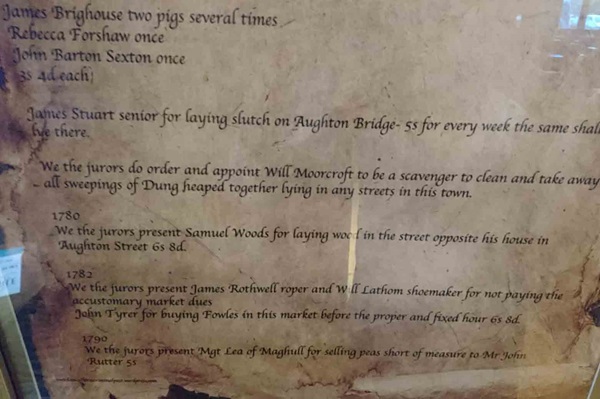
The text reads: This Wetherspoon pub has been named after the ‘Court Leet’, the forerunner of Ormskirk council.
The Court Leet, responsible for running the town’s affairs met in the Town Hall in Church Street and often adjourned to the Wheatsheaf “below the stairs”. It also enjoyed the hospitality provided at the Wheatsheaf after the inn had moved to Burscough Street, until the court was disbanded in 1876.
Before Liverpool became a major city, Ormskirk was an important market town and administrative centre for south west Lancashire. Law an order was a vital aspect of local life.
From the Middle Ages, Ormskirk had a pillory and stocks in the market place where many offenders were punished and publicly humiliated.
Mona Duggan wrote: “Among those put in the stocks in the seventeenth century were the townsfolk who dared to talk during the meeting of the Court Leet.
At the bottom of Aughton Street was a cook stool over what was then a much larger brook. Any woman who scolded or ‘chid’ in the town was punished by being ducked on the stool into Dyers Lane brook.
There was a whipping post in Burscough Street and it was here in 1746 that John Halton was tied, stripped naked and whipped for drinking the health of the Pretender. Many other Jacobites remembered Ormskirk as the place where they raided a glass warehouse when they fled northwards during their retreat from Derby in 1745. They smashed dozens of glass bottles and scattered them on the roadway to impede the loyalist cavalry which was pursuing them.
Some extracts from the Court Leet records of Ormskirk can be seen in the photograph.
Text about the history of Ormskirk.
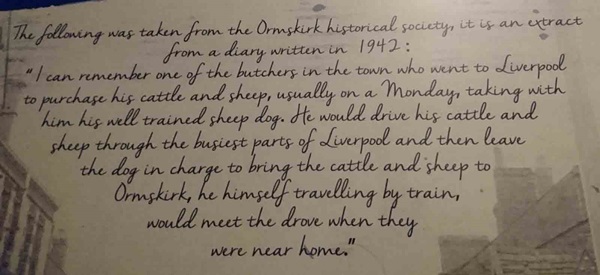
The text reads: In the old coaching days Ormskirk was a centre of great activity, the coaches on the turnpike road between Liverpool and Preston halting in the town for a ‘change’ both for man and beast and to set down and pick up passengers.
The directory of 1825 enumerates twenty seven inns here and a list of nine coaches passing through the town daily, or starting from it.
Text about the history of rope making.
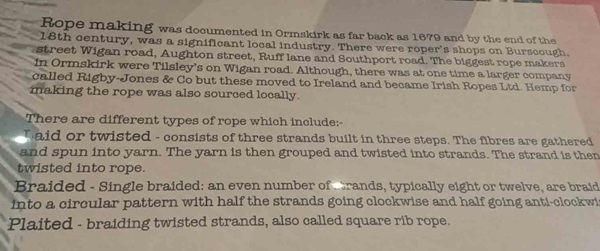
The text reads: Rope making was documented in Ormskirk as far back as 1679 and by the end of the 18th century, was a significant local industry. There were roper’s shops on Burscough Street Wigan Road, Aughton Street, Ruff Lane and Southport Road. The biggest rope makers in Ormskirk were Tilsley’s on Wigan Road. Although, there was at one time a larger company called Rigby-Jones & Co but these moved to Ireland and became Irish Ropes Ltd. Hemp for making the rope was also sourced locally.
There are different types of rope which include:
Laid or twisted – consists of three strands built in three steps. The fibres are gathered and spun into yarn. The yarn is then grouped and twisted into strands. The strand is then twisted into rope.
Braided – single braided: and even number of strands, typically eight or twelve, are braided into a circular pattern with half the strands going clockwise and half going anti-clockwise.
Plaited – braiding twisted strands, also called square rib rope.
Text about James Ikin Nunnerley.

The text reads: James Ikin Nunnerley was born around 1831 in Warrington, Cheshire. He was a draper before his enlistment at Dundalk. He was a member of Captain Morris’ troop; in April 1851, Morris’ squad book stated that Nunnerley was 23 years old and 6 foot tall, weighing 12st 4lb. He took part in the charge of the Light Brigade on 25 October 1854 – a charge of the British Light Cavalry against Russian forces, during the Battle of Balaclava, in the Crimean War. Owing to miscommunications in the chain of command, the Light Brigade was sent on a frontal assault, on horse-back, armed with only lances and sabres. This led to very high British casualties.
Text about horses during the First World War.
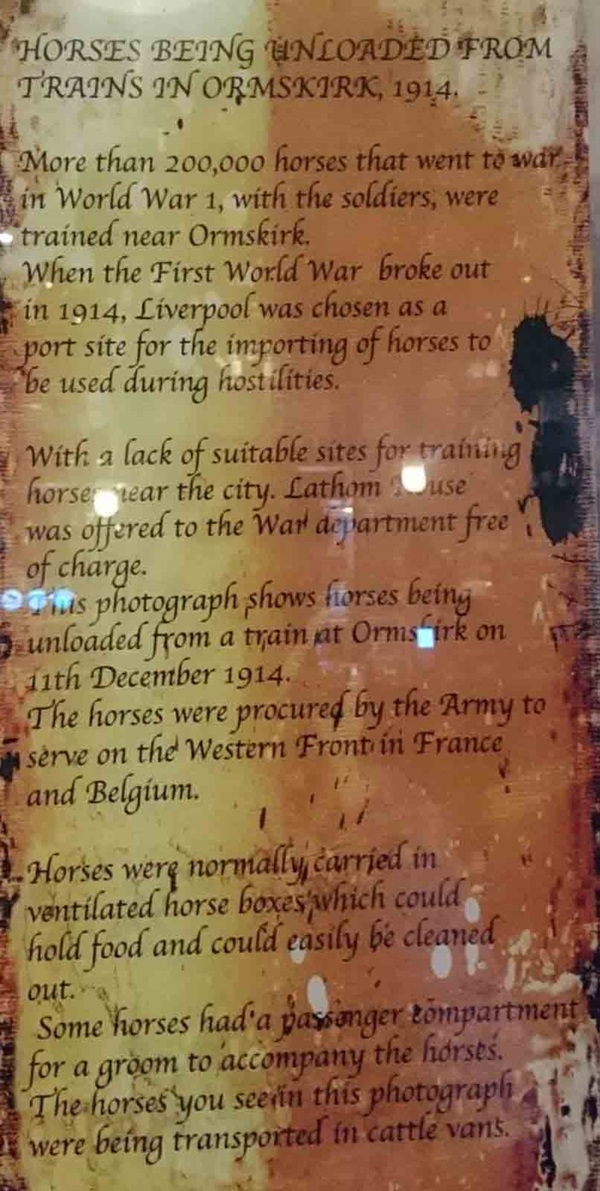
The text reads: More than 200,000 horses that went to war in World War 1, with the soldiers, were trained near Ormskirk. When the First World War broke out in 1914, Liverpool was chosen as a port site for the importing of horses to be used during hostilities.
With a lack of suitable sites for training horses near the city, Lathom House was offered to the war department free of charge. The horses were procured by the army to serve on the Western Front in France and Belgium.
Horses were normally carried in ventilated horse boxes which could hold food and be easily cleaned out.
Some horses had a passenger compartment for a groom to accompany the horses.
A photograph and text about Sally Woods.
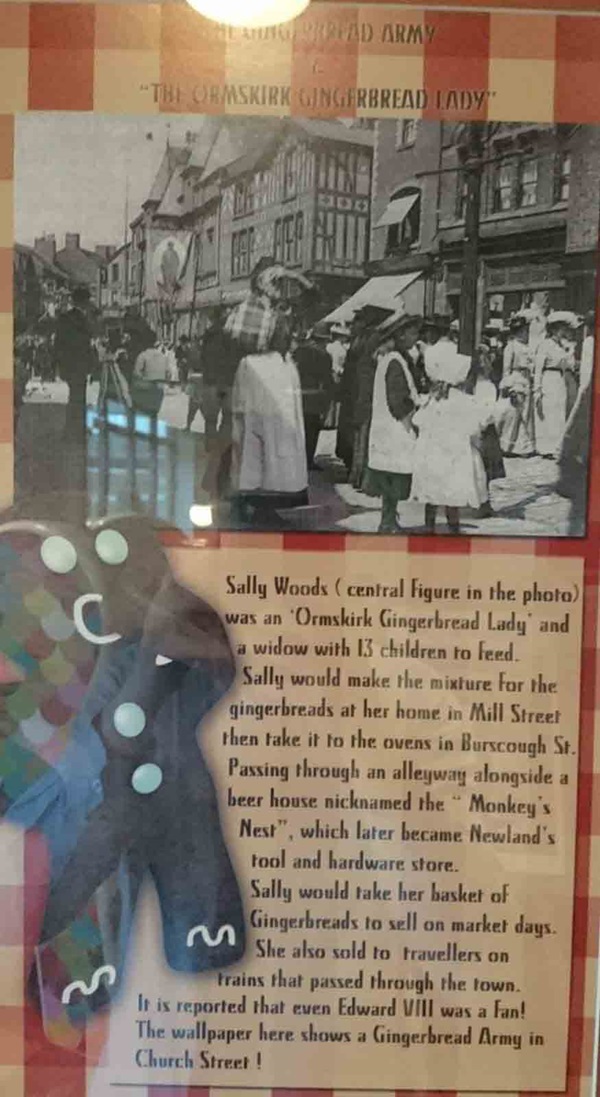
The text reads: Sally Woods (central figure in the photo) was an ‘Ormskirk gingerbread lady’ and a widow with 13 children to feed. Sally would make the mixture for her gingerbreads at her home in Mill Street then take it to the ovens in Burscough Street. Passing through an alleyway alongside a beer house nicknamed the ‘Monkey’s Nest’, which later became Newland’s tool and hardware store. Sally would take her basket of gingerbreads to sell on market days. She also sold to travellers on trains that passed through the town. It is reported that even Edward VIII was a fan! The wallpaper here shows a gingerbread army in Church Street!
A gingerbread inspired sculpture.
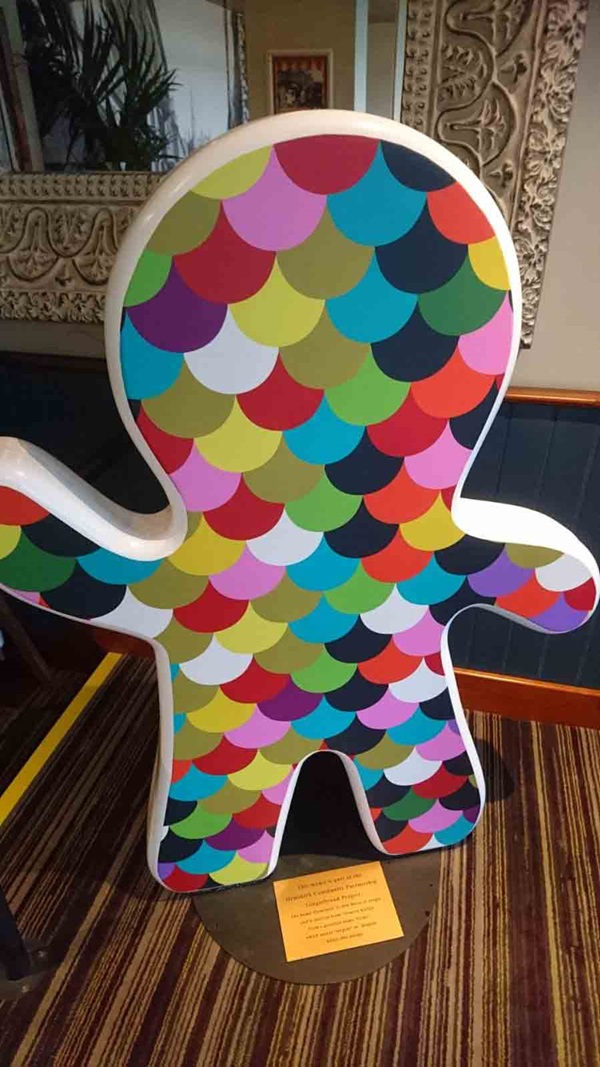
This model is part of the Ormskirk Community Partnership Gingerbread Project. The name ‘Ormskirk’ is Old Norse in origin and is derived from ‘Ormres Kirkja’ from a personal name ‘Ormr’, which means ‘serpent or dragon’ – hence this design.
External photograph of the building – main entrance.
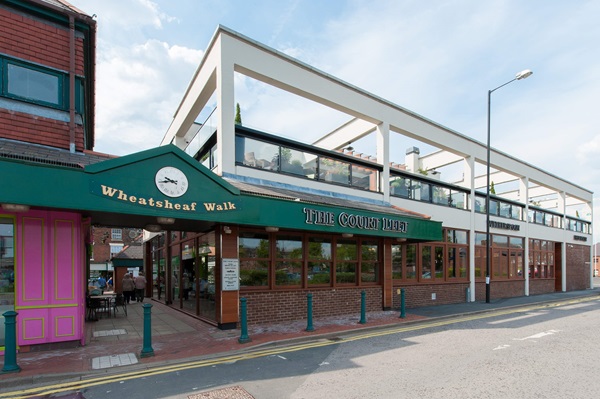
If you have information on the history of this pub, then we’d like you to share it with us. Please e-mail all information to: pubhistories@jdwetherspoon.co.uk